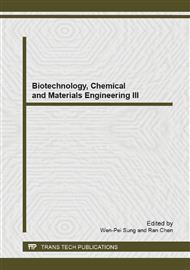p.593
p.598
p.603
p.607
p.611
p.615
p.619
p.625
p.630
Evaluation of Copper, Zinc and Chromium Contents of Some Wild Edible Mushrooms in Miyi
Abstract:
The aim of the present study was to analyze and compare contents of copper, zinc and chromium in 15 kinds of wild mushrooms. heavy metals were determined using flame atomic adsorption spectrometry (VARIAN, SpectrAA-220Fs). The mushrooms were collected from Miyi, China. The study explored the accumulation of heavy metals in different macrofung. Minimal and maximal concentrations of heavy metals were determined in Termitomyces microcarpus and Amanita esculenta for copper, Ramaria flava and Termitomyces for zinc, Hygrophorus eburnesus and Boletus aereus for chromium ,respectively. chromium values in wild mushrooms collected from Miyi were generally higher than the previous studies. Copper and zinc contents were in agreement with the literature value.
Info:
Periodical:
Pages:
611-614
Citation:
Online since:
January 2014
Authors:
Price:
Сopyright:
© 2014 Trans Tech Publications Ltd. All Rights Reserved
Share:
Citation:


